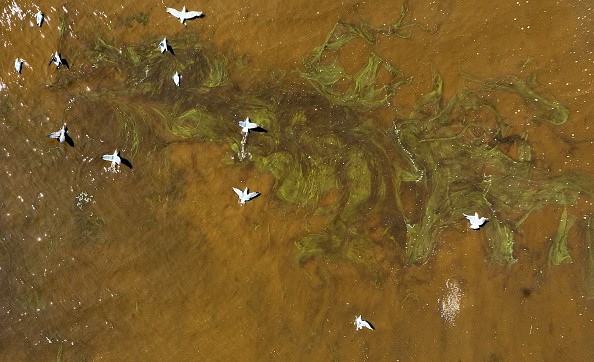A study found heavy rain could contribute to the emergence of algae blooms in lakes or marine water systems. Algae blooms have been growing concerns affecting many aquatic organisms.
Algae blooms can be noticeable with discoloration in the lake's or marine system waters. The discoloration could be green, red, blue or other colors. What is worrying is that it could affect marine ecosystems and potentially impact human health.

In a new study, researchers looked into how a storm or heavy rain with phosphorous could contribute to the emergence of algae blooms in marine water systems. While rain could be considered, the study noted other important factors in the algae explosion.
According to the United States Environmental Protection Agency (EPA), the emergence of algal blooms affecting marine water systems has been a major environmental concern in 50 states. EPA explained that algal blooms occurred due to the nutrients they require: nitrogen and phosphorus.
The Environmental Agency added that algal blooms could produce harmful and dangerous toxins that could impact drinking water and animals.
Rain and algae blooms
The report said that the study was published in Proceedings of the National Academy of the Sciences, and can be read on the Phys.org website. Researchers at the University of Wisconsin-Madison conducted the study.
As mentioned, the study explained that phosphorus has been an important driver in the emergence of algae blooms in marine water systems. According to the report, phosphorus can be present in crops, agriculture, lakes and rain.
Based on the study, the lead author, Steve Carpenter, explained that key factors play a significant role in algae blooms. It includes the following:
- Warm water surface
- Phosphorus
- Calm winds
- Zooplankton low abundance in the marine water system
Carpenter, a professor emeritus of integrative biology, explained that the occurrence of big storms doesn't mean an emergence of algae blooms. Carpenter is also a director emeritus at UW-Madison's Center for Limnology.
The study explained that Carpenter and a team of researchers looked into important datasets of Lake Mendota.
From analyzing the long-term datasets from Lake Mendota, the researchers found other key factors in the emergence of algae blooms in the said lake.
While phosphorus from rain is the main recipe in algae bloom, the researchers added that the interplay of key variables in the algae bloom would show difficulty in predicting the explosion of algae blooms.
The study added that algae blooms could be out of human control. However, reducing phosphorus in the land could help mitigate algae blooms. While the natural process could be slow, It would help reduce the emergence.
Effects on environment
EPA added that algal blooms could have effects on the environment. It affects fish and other aquatic animals to look for potential food, which could force them to find a different area. Water systems with algae blooms could also threaten many species.
The Environmental Agency emphasized that small aquatic animals could consume the toxins produced by algal blooms. It could also affect other animals who ate the same food with toxins.
For more similar, don't forget to follow Nature World News.
© 2025 NatureWorldNews.com All rights reserved. Do not reproduce without permission.





